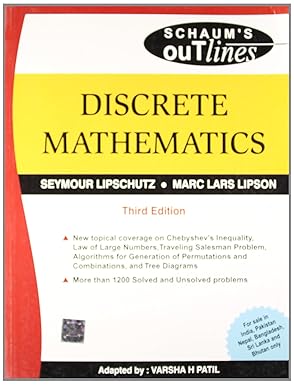
Upon successful completion of the course, the students will acquire:
1. Basic understanding of HTML syntax. Learn the fundamental syntax and structure of the web
programming language, including variables, data types, loops, conditionals and functions.
2. Proficiency in writing HTML code. Gain the ability to write HTML programs to solve simple to
moderately complex problems.
3. Understanding of Algorithms.Student will learn how to create algorithms to write more modular and
reusable code.
4. Understanding of GUI concepts: Students will learn the basic concepts andprinciples of GUI design
and development, including user interfaces,widgets, event handling, and layout management.
5. Introduction to data analysis and visualisation. Students will learn techniques to analyse and
visualise data by plotting different graphs and trees.

The Lab experiments aims:
- To use data structures as the introductory foundation for problem solving.
- To use the basic principles of programming as applied to complex data structures.
- To learn the principles of stack, queue, linked lists and its various operations.
- To learn fundamentals of binary search tree, implementation and use of advanced tree like AVL, B trees and graphs.
- To learn about searching, hashing and sorting.
- To learn the applications of linked lists, stacks, queues, trees and graphs.

COA Lab is the implementation of the following experiment on the simulator:
1. Implementing HALF ADDER, FULL ADDER using basic logic gates
2. Implementing Binary -to -Gray, Gray -to -Binary code conversions.
3. Implementing 3-8 line DECODER.
4. Implementing 4x1 and 8x1 MULTIPLEXERS.
5. Verify the excitation tables of various FLIP-FLOPS.
6. Design of an 8-bit Input/ Output system with four 8-bit Internal Registers.
7. Design of an 8-bit ARITHMETIC LOGIC UNIT.
8. Design the data path of a computer from its register transfer language description.
9. Design the control unit of a computer using either hardwiring or microprogramming based on its register
transfer language description.
10. Implement a simple instruction set computer with a control unit and a data path.

On completion of this course, the students will be able to
1. Understand the significance of value inputs in a classroom, distinguish between values and skills, understand the need, basic guidelines, content, and process of value education, explore the meaning of happiness and prosperity, and do a correct appraisal of the current scenario in the society
2. Distinguish between the Self and the Body, and understand the meaning of Harmony in the Self and the Co-existence of Self and Body.
3. Understand the value of harmonious relationships based on trust, respect, and other naturally acceptable feelings in human-human relationships and explore their role in ensuring a harmonious society
4. Understand the harmony in nature and existence, and workout their mutually fulfilling participation in nature.
5. Distinguish between ethical and unethical practices, and start working out the strategy to actualize a harmonious environment wherever they work.

Students will learn the Python syntax and semantics and be fluent in the use of Python control flow statements, handling of strings and functions , utilizing the data structures like lists, dictionaries, tuples and sets, file systems and regular expressions. Students will also learn the Object-Oriented Programming concepts such as encapsulation, inheritance and polymorphism as used in Python.

This course introduces the applications of discrete mathematics in the field of computer science. It covers sets, logic, proving techniques, combinatorics, functions, relations, Graph theory and algebraic structures. These basic concepts of sets, logic functions and graph theory are applied to Boolean Algebra and logic networks while the advanced concepts of functions and algebraic structures are applied to finite state machines and coding theory

The objective of this course is to familiarize the students with partial differential equation, their application and statistical techniques. It aims to present the students with standard concepts and tools at an intermediate to superior level that will provide them well towards undertaking a variety of problems in the discipline.
The students will learn:
The idea of partial differential equation and its different types of solution.
The concept ofmethod of separation of variables and Fourier transform to solve partial differential equations.
The basic ideas of statistics including measures of central tendency, correlation, regression and their properties.
The idea of probability, random variables, discrete and continuous probability distributions and their properties.
The statistical methods of studying data samples, hypothesis testing and statistical quality control.

The purpose of the course is to introduce principles of computer organization and the basic architectural concepts.
It begins with basic organization, design, and programming of a simple digital computer and introduces simple register transfer language to specify various computer operations. Computer organization and architecture courses study the structure and function of a computer system's components, how they interact, and how they are organized. They also explore the design and functionality of the hardware components and the steps the CPU takes from when a program is loaded into memory until it generates output.

A data structure is an arrangement of data in a computer’s memory. In this course students will learn ways to structure and arrange data in computer’s memory that includes array, linked lists, stacks, trees, hash tables, graphs. Algorithms manipulate that data in these structures in various ways, such as searching for a data item and sorting a set of data
elements. The concepts including how to organize data elements, how to delete, insert, edit and search for a data element in a specific data structure and how to sort a set of data elements will also be taught. You will also learn the differences between different data structures and when to use to use the right ones to solve problems.